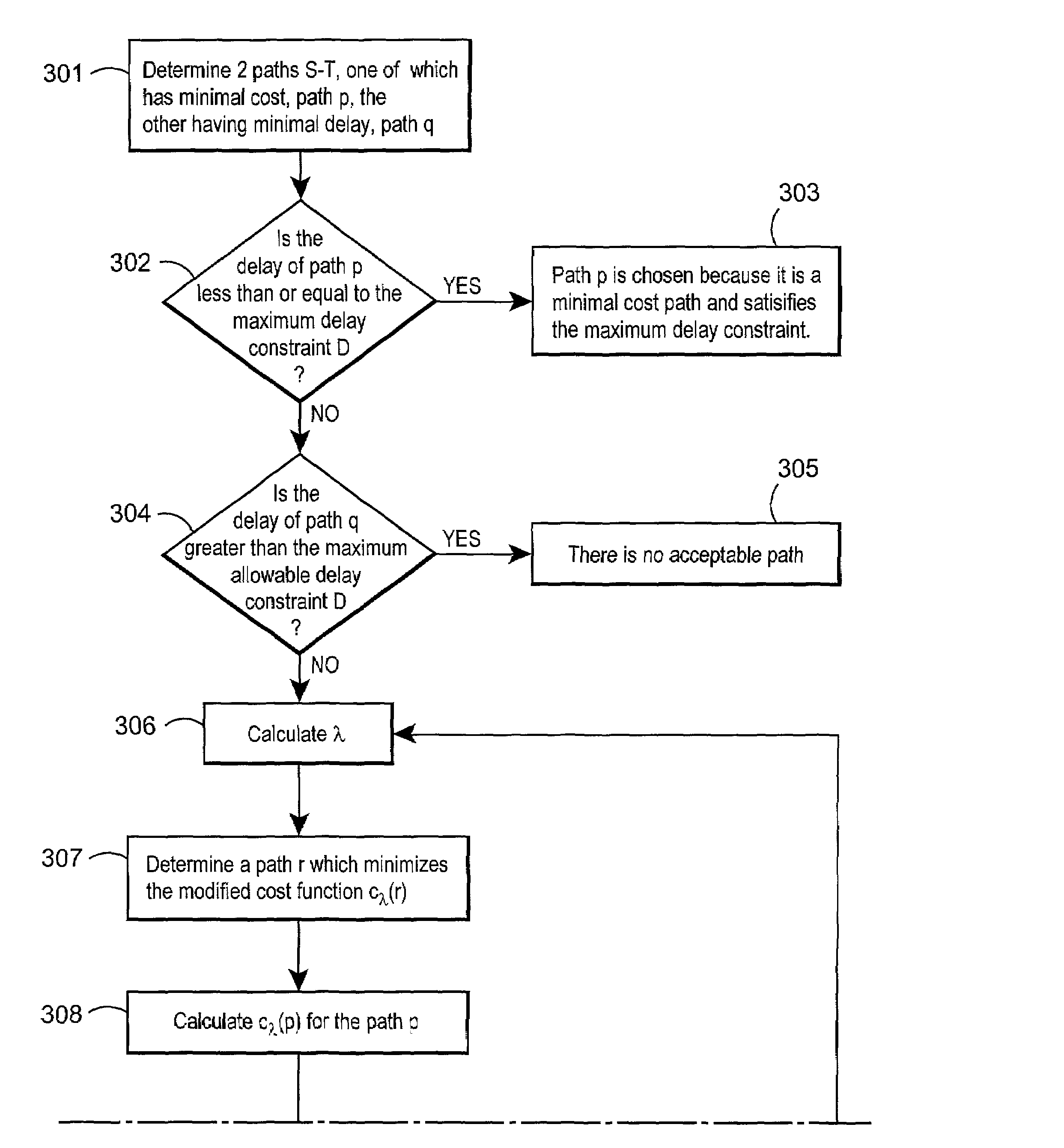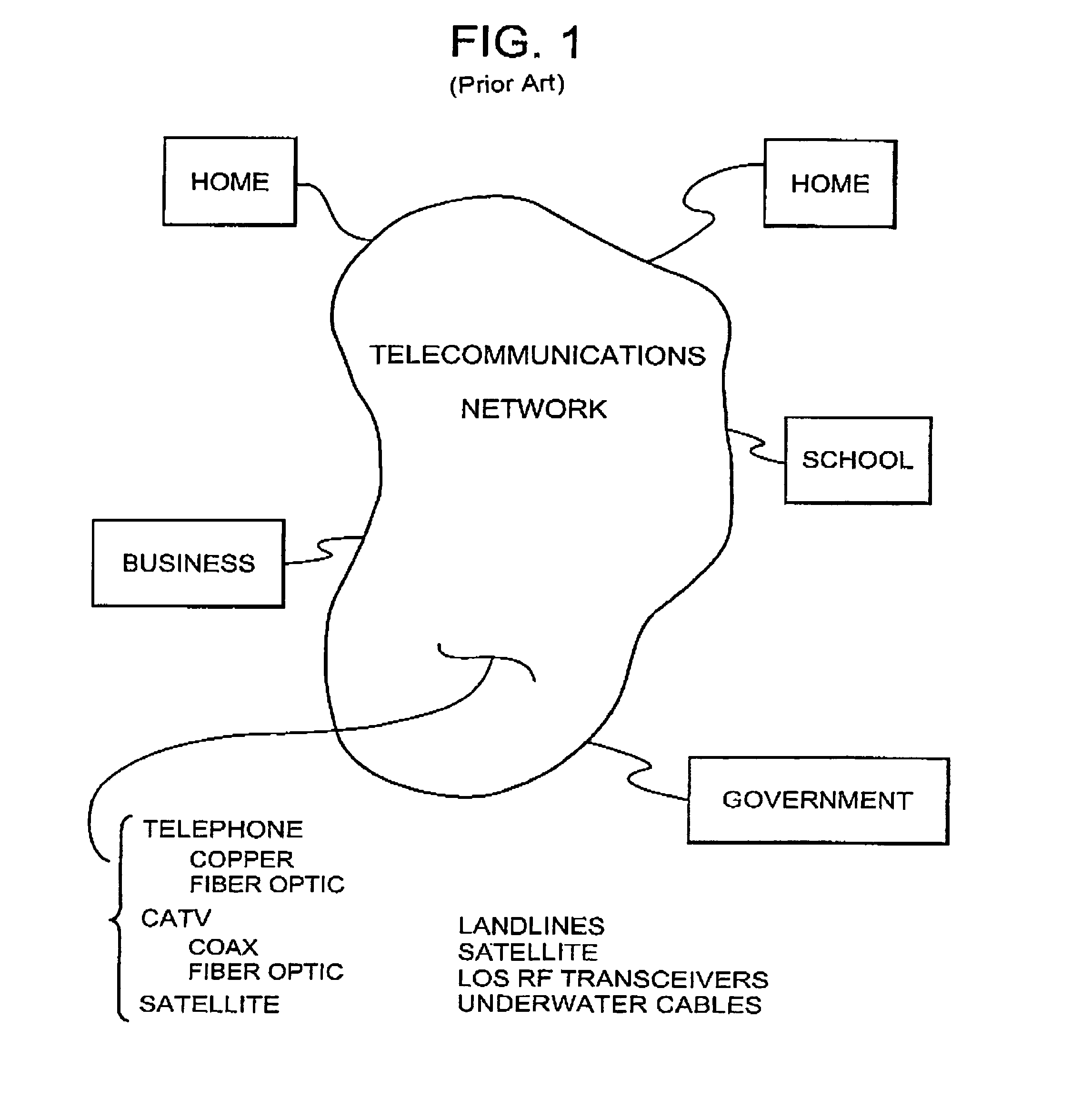Lagrange quality of service routing
- Summary
- Abstract
- Description
- Claims
- Application Information
AI Technical Summary
Benefits of technology
Problems solved by technology
Method used
Image
Examples
Embodiment Construction
[0045]The preferred embodiment of the invention solves the problem of determining an optimal path, in terms of one or more constraints, in a communications system, in a minimal amount of time. The present invention combines the well known Dijkstra algorithm (described below) with use of the Lagrange relaxation technique. Conceptually, any communication system can be thought as a collection of nodes and links. A collection of nodes is a “set” of nodes, and a collection of links is a “set” of links. A cost function can be written which describes cost as a function of the set of links. Recall that “cost” is simply any criteria that specifies a QoS for a link or node. There are constraint functions d1, d2 . . . dk that describe the different constraints on costs that might be placed on a path in the network. The constraint functions d1, d2 . . . dk have maximum constraints or limits D1, D2 . . . Dk. The task, therefore, is to find a path p from s to t (S-T) such that dl(p)≦Di, (i.e. the...
PUM
 Login to View More
Login to View More Abstract
Description
Claims
Application Information
 Login to View More
Login to View More - R&D
- Intellectual Property
- Life Sciences
- Materials
- Tech Scout
- Unparalleled Data Quality
- Higher Quality Content
- 60% Fewer Hallucinations
Browse by: Latest US Patents, China's latest patents, Technical Efficacy Thesaurus, Application Domain, Technology Topic, Popular Technical Reports.
© 2025 PatSnap. All rights reserved.Legal|Privacy policy|Modern Slavery Act Transparency Statement|Sitemap|About US| Contact US: help@patsnap.com



